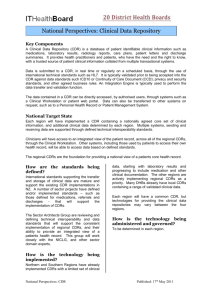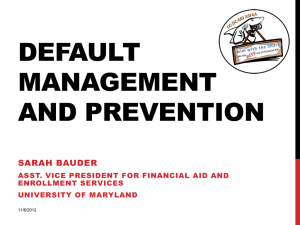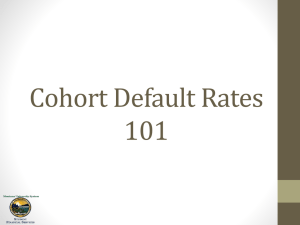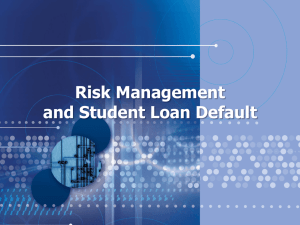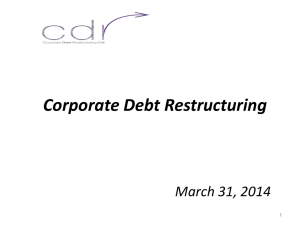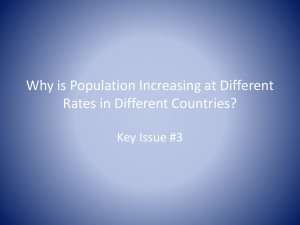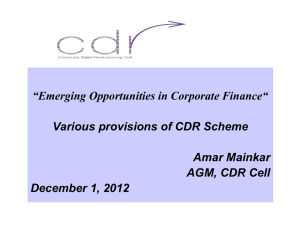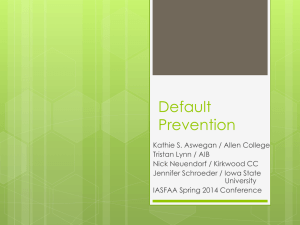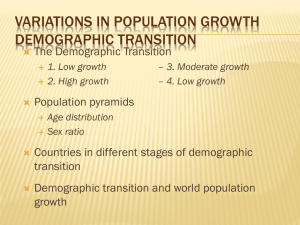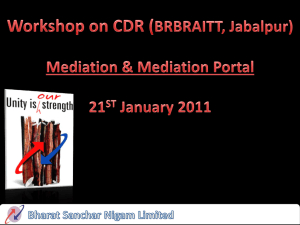Cohort Default Rate (CDR)
advertisement
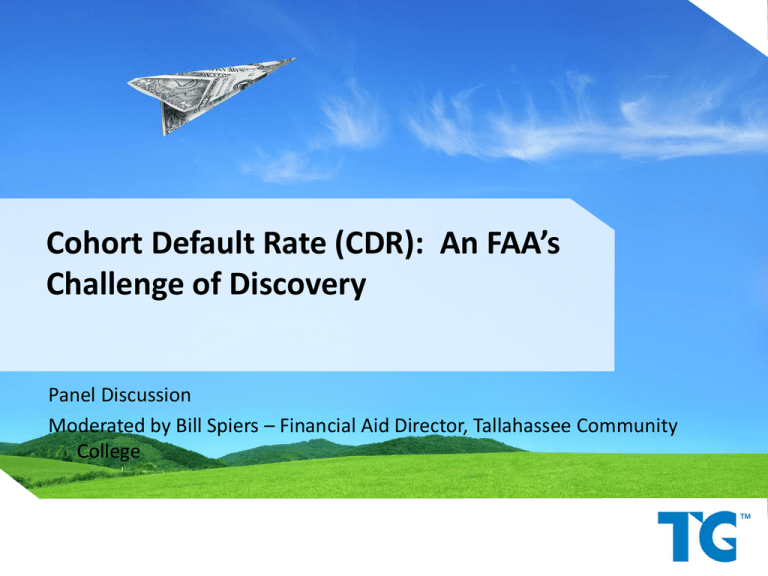
Cohort Default Rate (CDR): An FAA’s Challenge of Discovery Panel Discussion Moderated by Bill Spiers – Financial Aid Director, Tallahassee Community College Panel Members Thresa Tyus Default Aversion Consultant TG Mary McKinney Executive Director, Office of Student Financial Assistance University of Central Florida Shavon Seegobin Default Prevention Manager Full Sail University Tocoa Evariste Assistant Director of Student Financial Services Polk State College Outline • Default management – why does it matter? • Cohort default rate (CDR) – what is it? • Panel discussion – Best practices and strategies to keep CDRs low Default Management – Why does it matter? Managing default is more important than ever • Tough economy and job market • Rising enrollment and borrowing • Split loans (multiple servicers) • Transition to a 3-year cohort default rate Default management – Why does it matter? • Higher education is an investment worth protecting • Cohort default rates help enforce accountability Default management – Why does it matter? • Schools – May result in provisional certification or loss of Title IV eligibility – Risk of negative publicity – Additional time and resources to manage and reverse high rates • Borrowers – Damaged credit – Wage garnishment, collections costs, treasury offset, etc. Cohort default rate – What is it? What is a Cohort Default Rate (CDR)? • A “cohort” is a group of Stafford loan borrowers who enter repayment within a given federal fiscal year (FY) • The CDR is the percentage of those students in a school’s cohort who default within a specified period of time: – 2-year CDR: by the end of the next fiscal year – 3-year CDR: within the next two fiscal years 2-year and 3-year CDR illustration FY 2009 2-year CDR = FY 2009 3-year CDR = Stafford borrowers who entered repayment and defaulted between 10/1/08 and 9/30/10 Stafford borrowers who entered repayment between 10/1/08 and 9/30/09 Stafford borrowers who enter repayment and default between 10/1/08 and 9/30/11 Stafford borrowers who entered repayment between 10/1/08 and 9/30/09 2-year CDR trends 25.0% 2-year CDR 20.0% 15.0% 10.0% 5.0% 0.0% Source data: http://www2.ed.gov/offices/OSFAP/defaultmanagement/defaultrates.html Comparing the 3-year CDR 14.0% 12.0% 10.0% 8.0% Official 2-Year CDR 6.0% Trial 3-year CDR 4.0% 2.0% 0.0% Fiscal Year Source data: http://www2.ed.gov/offices/OSFAP/defaultmanagement/defaultrates.html Benefits for low CDRs • Three most recent 2-year CDRs < 10% – Loans released in one disbursement – No 30-day delayed disbursement for first-year, first-time borrowers • Three most recent 2- or 3-year CDRs < 15% (Effective for loans first disbursed after October 1, 2011) Sanctions for high CDRs – Provisional certification Trigger event – A single 2-year CDR ≥ 25% Two 3-year CDRs ≥ 30% in last three years Effective with third 3-year rate (September 2014) 35% 30% 30% 25% 25% CDR CDR 20% 15% 10% 20% 15% 10% 5% 5% 0% 0% FY 2007 FY 2008 FY 2009 FY 2009 FY 2010 FY 2011 Sanctions for high CDRs – Loss of eligibility FDLP loans only : FDLP loans and Pell Grants: • 2- or 3-year CDR greater than 40% for a single year • 2-year CDR 25% or greater for 3 years • 3-year CDR 30% or greater for 3 years Effective with third 3-year rate (September 2014) 50% 35% 45% 1 year 20% 15% 10% CDR 25% 20% 15% 10% 3 years 3-year CDR 25% 3 years 2-year CDR 30% 2 or 3-year CDR 35% CDR 40% 30% 5% 5% 0% 0% FY 2009 FY 2009-2011 FY 2009-2011 High CDRs – New requirements When 3-year CDRs are ≥ 30%, but less than 40%: • First year – Establish default prevention task force – Prepare default prevention plan • Second year – Review and revise plan • Third year – Lose eligibility (Pell grants and Direct loans) Two-Year and Three-Year CDRs Panel Discussion Questions? Contact Information Thresa Tyus Thresa.Tyus@tgslc.org Mary McKinney Mary.McKinney@ucf.edu Shavon Seegobin Shavon.Seegobin@fullsail.com Tocoa Evariste tevariste@polk.edu © 2011 Texas Guaranteed Student Loan Corporation To order additional copies, or to request permission to reproduce any of the information provided, please call TG Communications at (800) 252-9743.
